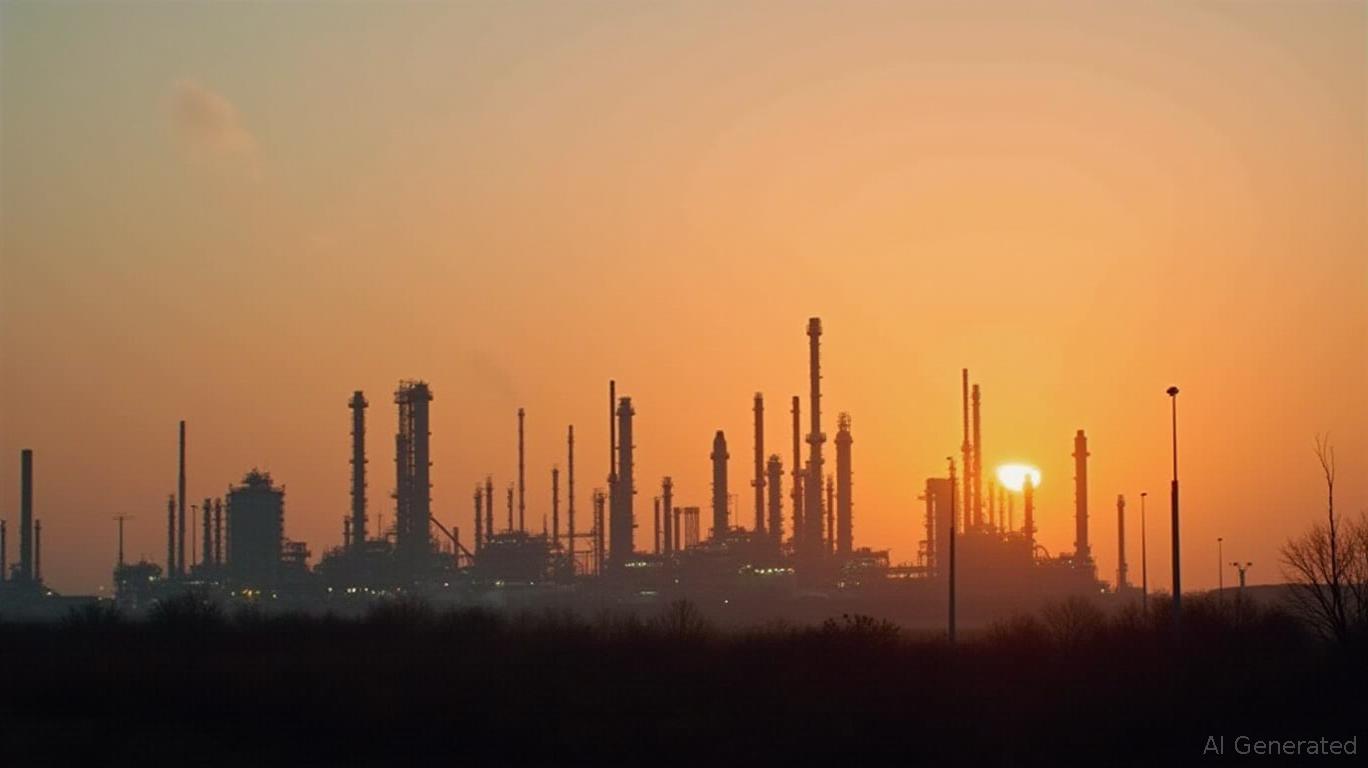LyondellBasell: Deteriorating Fundamentals and Macro Headwinds Signal an Immediate Sell
LyondellBasell (NYSE: LYB), one of the world's largest plastics and chemicals producers, has faced mounting challenges in its Q1 2025 results, revealing a troubling combination of declining revenues, margin pressures, and persistent macroeconomic headwinds. For investors, the data underscores a compelling case to exit positions in LYB now, as the company's fundamentals weaken amid structural industry risks.

Revenue Declines Across All Segments
LyondellBasell's Q1 2025 revenue fell to $7.68 billion, a 7.6% year-over-year decline and a 1.7% sequential drop from Q4 2024. Every business segment reported revenue contraction:
- Olefins & Polyolefins – Americas (O&P Americas): Down 13.6% to $2.48 billion, missing analyst estimates by a wide margin. Ethylene margins were crushed by higher natural gas and ethane prices, which outpaced pricing power in polyethylene markets.
- Olefins & Polyolefins – Europe, Asia, International (O&P EAI): Revenue dipped 5.3% to $2.6 billion, with unplanned downtime and rising feedstock costs offsetting higher ethylene prices.
- Advanced Polymer Solutions (APS): Revenue fell 5.9% to $908 million, though EBITDA improved modestly due to cost-cutting.
- Intermediates & Derivatives (I&D): Revenue dropped 11.1% to $2.3 billion, hurt by the closure of a Dutch propylene oxide joint venture and weak derivative margins.
- Technology Segment: Revenue collapsed 37.5% to $120 million, reflecting reduced licensing activity and weaker catalyst sales—a stark warning about the company's innovation pipeline.
The Technology segment's performance is particularly concerning, as licensing revenue is typically a stable cash source. Its steep decline suggests broader market skepticism about LyondellBasell's ability to drive long-term growth.
Ask Aime: What's the outlook for LyondellBasell's slump in Q1 2025, and how should I adjust my portfolio?
Margin Pressures and Cash Flow Woes
Margins have eroded sharply. Adjusted EBITDA fell to $576 million, a 45% decline from Q1 2024, as higher feedstock costs outpaced revenue. The net income of $177 million (excluding non-recurring items) and diluted EPS of $0.33 were both deeply disappointing, with EPS down 77% from the same quarter a year ago.
Ask Aime: Should I sell my LyondellBasell shares due to falling revenue?
Cash flow deteriorated further:
- Operating cash flow turned negative at -$579 million, driven by higher receivables, inventory buildup post-maintenance, and share repurchases.
- While LyondellBasell maintained $6.5 billion in total liquidity, the reliance on debt and cash reserves to fund operations is unsustainable if revenue declines persist.
The stock has underperformed peers by 15% over the past year, reflecting investor skepticism about its ability to navigate these challenges.
Macro Headwinds: No Relief in Sight
LyondellBasell's struggles are not isolated but tied to industry-wide pressures:
1. Feedstock Cost Inflation: Natural gas prices in North America remain elevated, squeezing margins for ethane-based crackers. The oil-to-gas price ratio, a critical determinant of feedstock competitiveness, has narrowed to unprofitable levels for many producers.
2. Global Demand Weakness: Weaker packaging demand in Europe and Asia, along with trade disruptions, has hurt sales.
3. Operational Disruptions: Unplanned downtime and maintenance delays have reduced production efficiency, compounding cost issues.
Even LyondellBasell's optimistic outlook for Q2 2025—citing “seasonal demand improvements” and lower U.S. feedstock costs—relies on assumptions that may not hold. For instance, summer gasoline demand could boost oxyfuels margins, but this is a short-term fix for a company facing structural issues.
Strategic Actions: Too Little, Too Late?
LyondellBasell has announced cost-cutting measures, including a $500 million Cash Improvement Plan, closures of underperforming assets, and securing cheaper feedstock in Saudi Arabia. However:
- These moves are reactive rather than transformative, addressing symptoms (cash flow) rather than root causes (high feedstock costs, declining demand).
- The U.S. Gulf Coast propylene expansion, while positive, may not offset declining margins in other regions.
Investors should also note that debt remains manageable, but the company's focus on shareholder returns—$543 million returned via dividends and buybacks in Q1—could strain liquidity if cash flow continues to shrink.
Investment Thesis: Sell Now, Reassess Later
The evidence is clear: LyondellBasell's fundamentals are deteriorating, with no immediate catalyst to reverse the trend. Key risks include:
- Feedstock costs remaining elevated due to energy market volatility.
- Global economic slowdowns further reducing demand for plastics.
- Competitive pressures as peers with better feedstock access (e.g., Middle Eastern producers) gain market share.
Investors should consider selling immediately and avoiding re-entry until:
1. Revenue and margins stabilize or improve.
2. The company demonstrates meaningful progress in reducing feedstock costs.
3. Macro headwinds like energy prices and global demand ease.
Conclusion
LyondellBasell's Q1 results and ongoing challenges paint a bleak picture for near-term investors. With deteriorating revenues, margin erosion, and macroeconomic risks worsening, the stock offers little upside and significant downside. Until LyondellBasell proves it can navigate these structural issues, shareholders are better off elsewhere.
Recommendation: Sell LyondellBasell (LYB) now.
John Gapper's analysis focuses on fundamental and macroeconomic trends. Individual circumstances may vary; consult a financial advisor before making investment decisions.

Comments
No comments yet